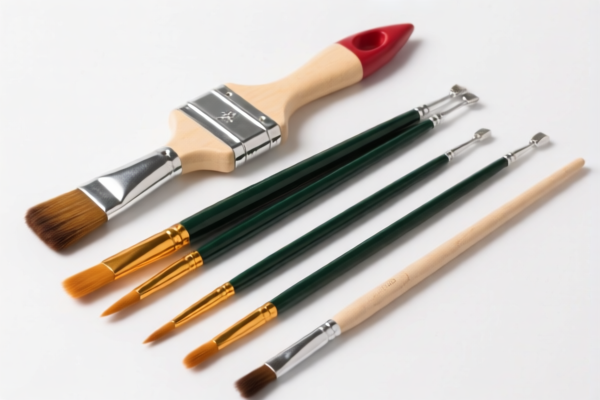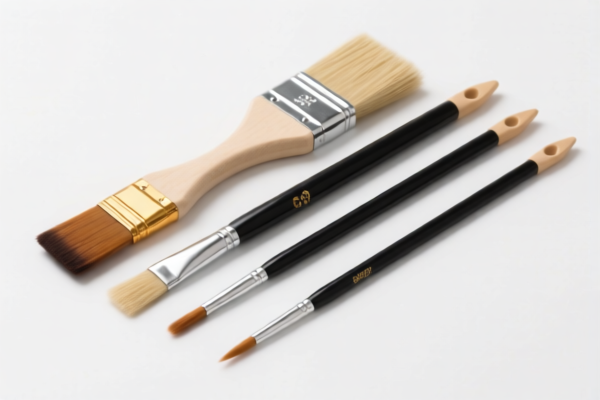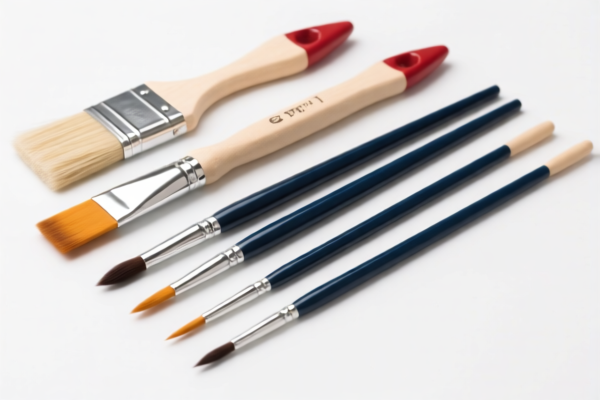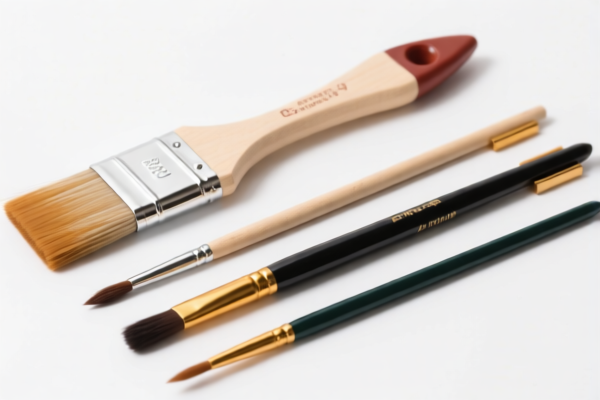| HS Code | Official Doc | Tariff Rate | Origin | Destination | Effective Date |
|---|---|---|---|---|---|
| 4823901000 | Doc | 55.0% | CN | US | 2025-05-12 |
| 4823907000 | Doc | 55.0% | CN | US | 2025-05-12 |
| 4822100000 | Doc | 55.0% | CN | US | 2025-05-12 |
| 4822900000 | Doc | 55.0% | CN | US | 2025-05-12 |
| 9603302000 | Doc | 40.1% | CN | US | 2025-05-12 |
| 9603306000 | Doc | 30.0% | CN | US | 2025-05-12 |




Oil Painting Brush Set
An oil painting brush set is a collection of brushes specifically designed for use with oil paints. These sets cater to a range of techniques and skill levels, from beginner to professional.
Material
The core components of oil painting brushes are:
- Bristles: Traditionally, bristles are sourced from animal hair, most commonly:
- Hog Bristle: Known for stiffness and durability. Excellent for thick paint application, creating texture, and moving heavier bodied paints. Often used for impasto techniques.
- Sable: Offers a softer touch and excellent paint holding capacity. Ideal for blending, detail work, and smoother application. More expensive than hog bristle. Kolinsky sable is considered the highest quality.
- Synthetic: Made from nylon or polyester. These are increasingly popular due to their affordability, durability, and consistent performance. Modern synthetics can closely mimic the properties of natural hair.
- Handle: Typically made of wood (birch, beech, or rosewood are common) or acrylic. Handles provide grip and control. Long handles are generally used for easel work, while short handles are preferred for detail work and painting in a sketchbook.
- Ferrule: The metal band that secures the bristles to the handle. Typically made of nickel or aluminum.
Purpose & Function
Oil painting brushes are used to apply, blend, and manipulate oil paint on a variety of surfaces, including canvas, wood panels, and paper. They facilitate:
- Coverage: Applying paint to the painting surface.
- Blending: Creating smooth transitions between colors.
- Detailing: Achieving fine lines and intricate work.
- Texturing: Building up layers of paint to create impasto effects.
- Washing: Applying diluted paint for underpainting or glazes.
Usage Scenarios
- Easel Painting: Larger brushes with long handles are used for working on canvases on an easel.
- Studio Work: A variety of brush sizes and shapes are used for detailed work and layering.
- Plein Air Painting (Outdoor Painting): Portable sets with a range of brush sizes are used for capturing scenes outdoors.
- Detail Work: Smaller, pointed brushes are used for fine details and intricate designs.
- Restoration: Specialized brushes are used for cleaning and repairing oil paintings.
Common Types
Brush shapes significantly impact their function:
- Round: Versatile, good for detail work, outlining, and controlled lines.
- Flat: Ideal for broad strokes, filling large areas, and blending.
- Bright: Similar to flat brushes but shorter bristles, offering more control.
- Filbert: A flat brush with rounded edges, combining the benefits of flat and round brushes; good for blending and soft edges.
- Angular: Used for precise lines, corners, and controlled strokes.
- Fan: Used for blending, softening edges, and creating special effects.
- Mop: Large, soft brushes for blending and creating washes.
- Rigger: Long, thin brushes for fine lines, signatures, and details.
The declared goods are oil painting brush sets, which are brushes used for applying paint, specifically for oil painting. These brushes are artists’ brushes intended for cosmetic or artistic applications.
The following HS codes are relevant based on the provided reference material:
-
9603302000: Brooms, brushes (including brushes constituting parts of machines, appliances or vehicles), hand-operated mechanical floor sweepers, not motorized, mops and feather dusters; prepared knots and tufts for broom or brush making; paint pads and rollers; squeegees (other than roller squeegees): Artists' brushes, writing brushes and similar brushes for the application of cosmetics: Valued not over 5¢ each. This code applies to artists’ brushes valued at or below 5¢ each.
- 9603: Brooms, brushes, mops and feather dusters; prepared knots and tufts for broom or brush making; paint pads and rollers. This chapter covers a wide range of cleaning and application tools.
- 30: Artists’ brushes, writing brushes and similar brushes for the application of cosmetics. This heading specifically focuses on brushes used for artistic or cosmetic purposes.
- 302000: Valued not over 5¢ each. This subheading defines a specific valuation threshold for the brushes.
-
9603306000: Brooms, brushes (including brushes constituting parts of machines, appliances or vehicles), hand-operated mechanical floor sweepers, not motorized, mops and feather dusters; prepared knots and tufts for broom or brush making; paint pads and rollers; squeegees (other than roller squeegees): Artists' brushes, writing brushes and similar brushes for the application of cosmetics: Valued over 10¢ each. This code applies to artists’ brushes valued above 10¢ each.
- 9603: Brooms, brushes, mops and feather dusters; prepared knots and tufts for broom or brush making; paint pads and rollers. This chapter covers a wide range of cleaning and application tools.
- 30: Artists’ brushes, writing brushes and similar brushes for the application of cosmetics. This heading specifically focuses on brushes used for artistic or cosmetic purposes.
- 306000: Valued over 10¢ each. This subheading defines a specific valuation threshold for the brushes.
Regarding HS codes 9603302000 and 9603306000, the correct code selection depends on the per-brush value. If the value of each brush in the set is not over 5¢, use 9603302000. If the value of each brush is over 10¢, use 9603306000.
Customer Reviews
No reviews yet.